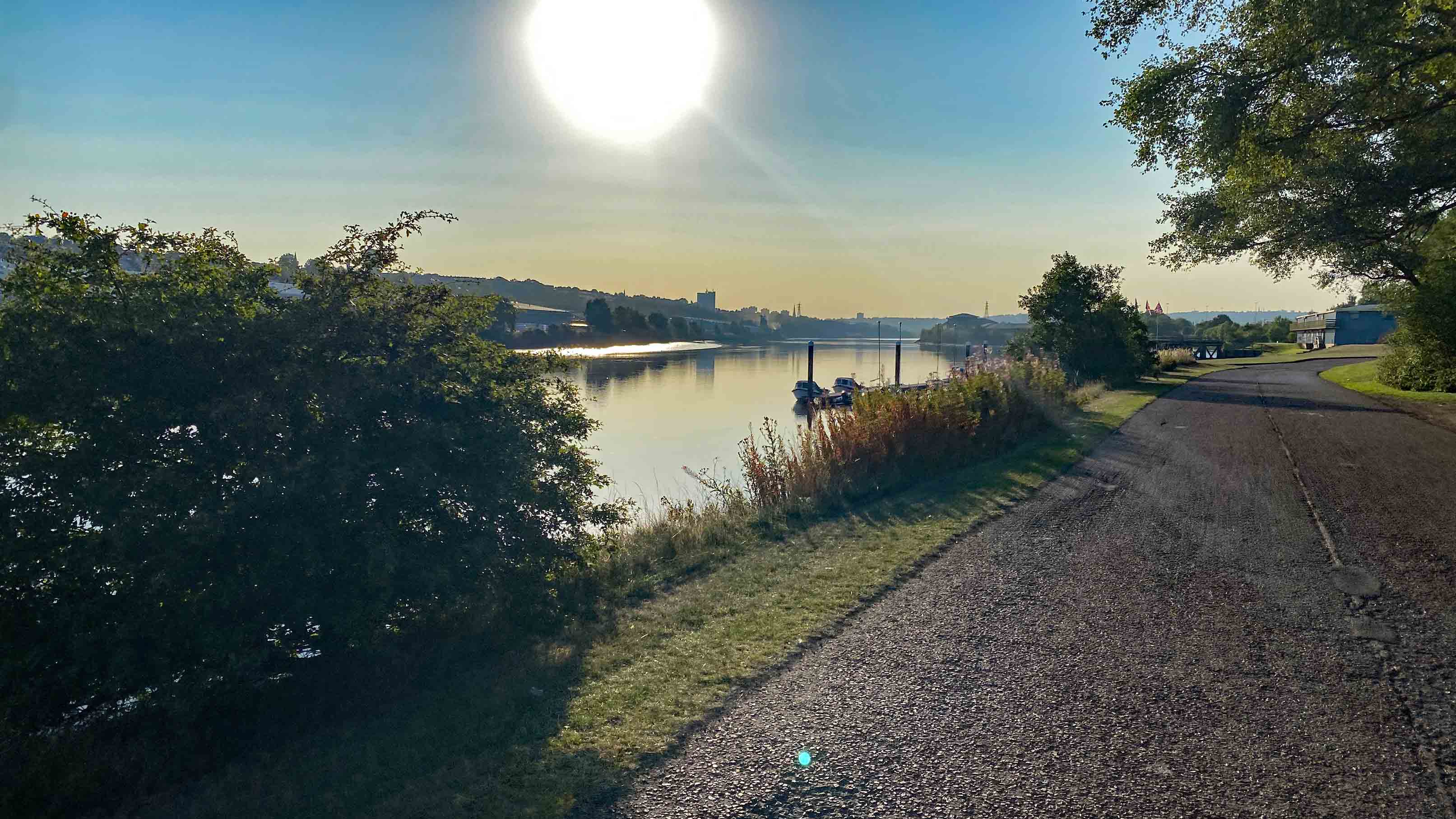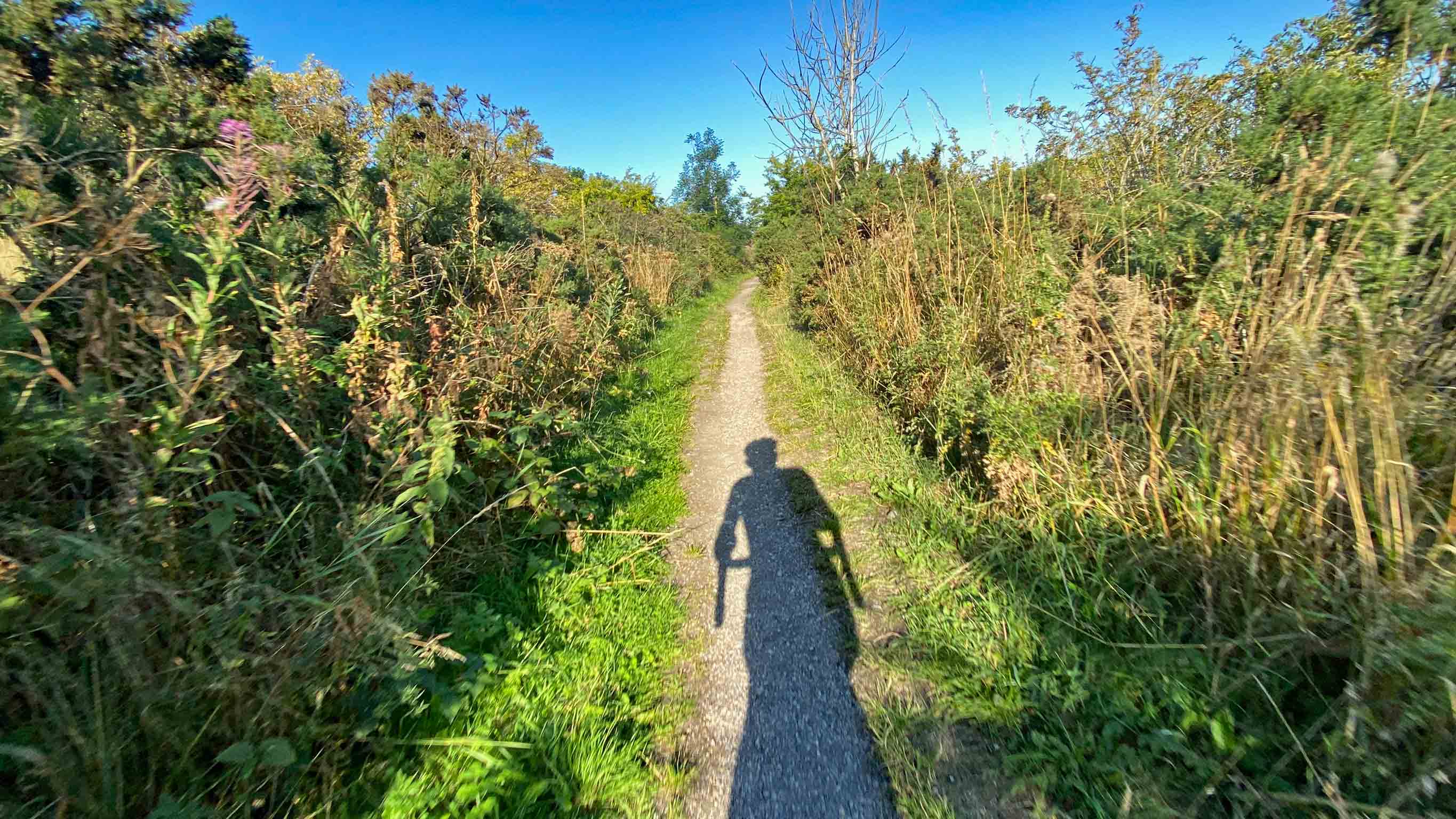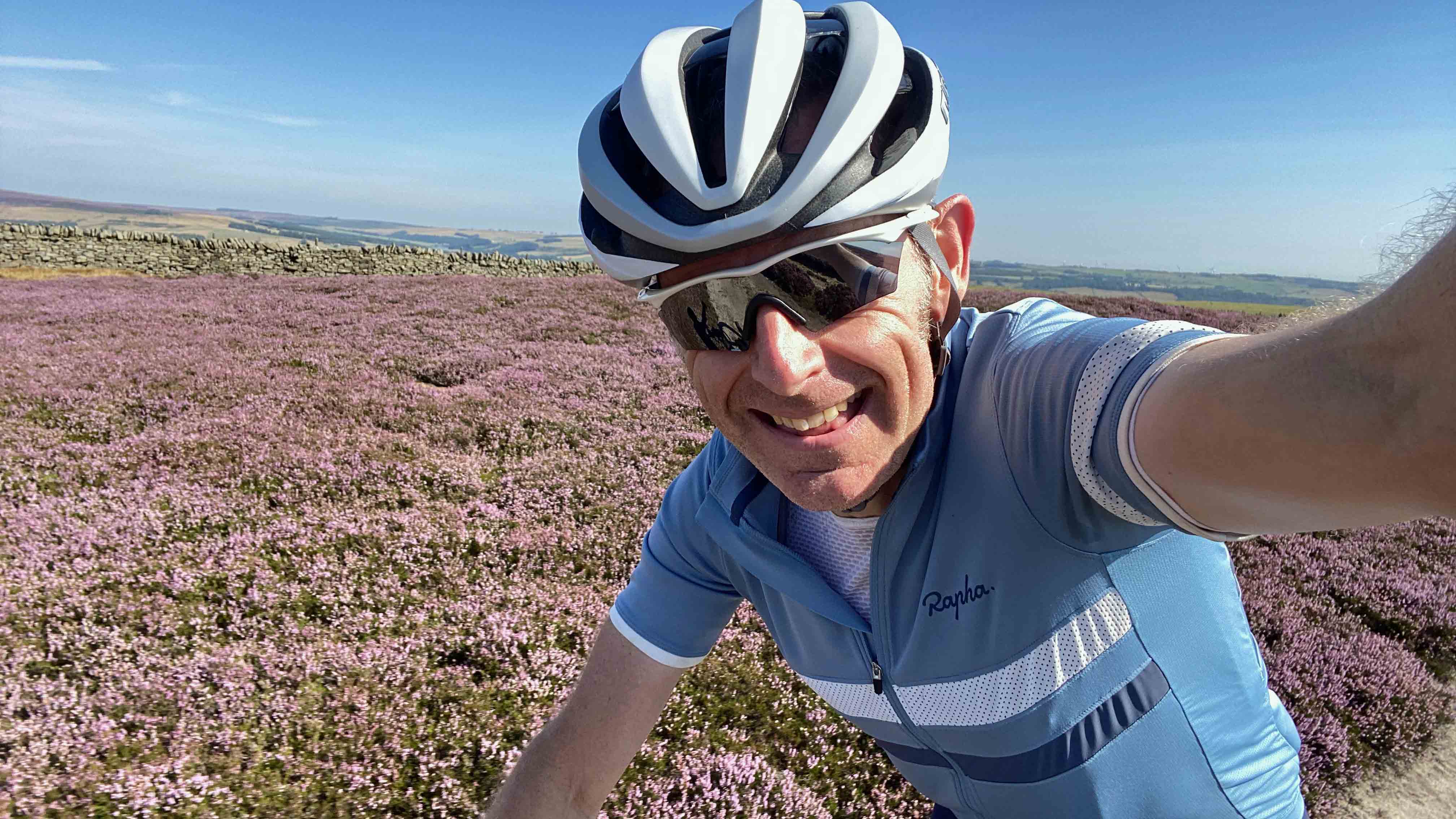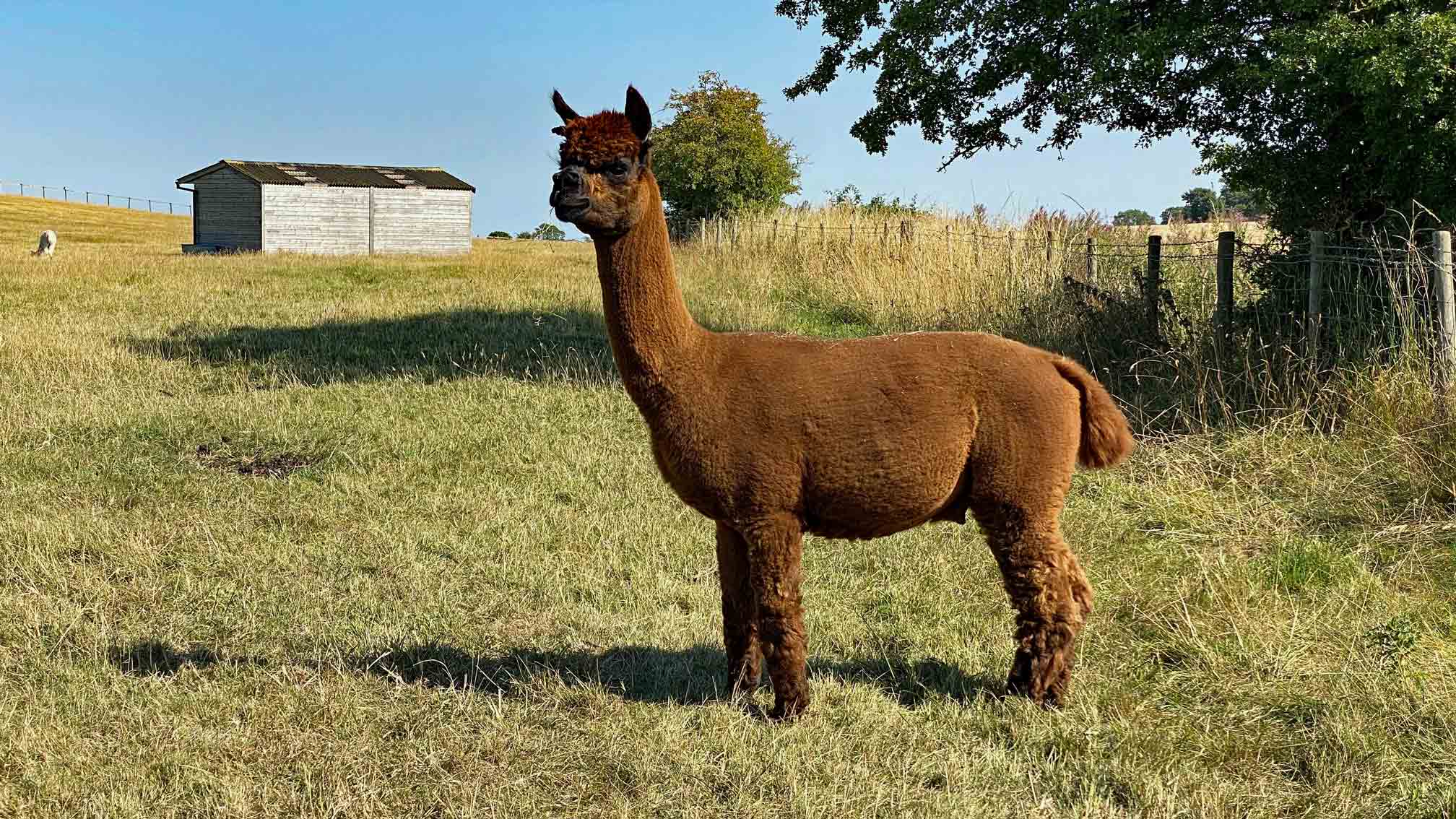
I had a little voice mentally whispering in my ear. “Sit and spin”. “Sit and spin”. “Sit and spin”. Each of us has their preferred style of climbing and I’m definitely in the “stand up and push a big gear” camp rather than the “twiddle away in a tiny gear with a manic cadence”. In my head I look more like Alberto Contador rather than Chris Froome, although I suspect the truth may be *slightly* less flattering. But I knew today was going to be a big day out. In fact, if all went to plan, it would likely be my biggest ever day on a bike. That meant just one thing – pacing was critical and so I mentally willed myself to relax and choose an appropriately easy gear up the first climb, rather than my usual overly enthusiastic (and probably foolhardy) style. When I first got into riding, I had a good friend who was a physical training instructor in the armed forces and was consequently insanely fit. Whenever we rode together, he would say “sit and spin” every time I looked as though I was pushing too big a gear on a climb. During this ride I had him mentally sitting on my shoulder regulating my effort.

I’d planned today’s route almost two years earlier, but never quite got around to riding it. It was a combination of trails I’d found myself and bits recommended by different local ride buddies. It was nominally a gravel route, but I knew that some of the moorland sections were pretty ‘chunky’ by gravel standards – there were a couple of descents, fortunately short, where the trail surface was primarily loose roughly fist sized chunks of rock. I’d ridden all the trails before, but I knew that avoiding tyre or rim damage was critical if I wanted to make it all the way round in one piece. I’d deliberately front-loaded the route with climbing and more technically demanding trails as I figured that as the ride went on, I’d be tired and likely suffering with diminished mental acuity, so a gentler finish was sensible.
“Are you mad?”
When I first mentioned my route idea to my normal #fridaygravelgang there was a good mix of “yep, I’m up for that” and “are you mad?” In the end I think I’d convinced them all to join me, but unfortunately on the chosen day everyone was either working or on holiday, so I was going to be testing the route in solo-mode.
“My aim was to make the route more than 100 miles (160.934kms) and I wanted it to be as off-road biased as possible.”
In the big scheme of things my route was never going to win any awards for length, duration or level of required exertion – it was planned to be 165kms with 2400m of climbing – it’s quite a big day out, but it pales into insignificance compared to the distances that ultra-distance athletes like Sofiane Sehili cover. When I was putting the route together, my aim was to make it more than 100 miles (160.934kms) and I wanted it to be as off-road biased as possible. That distance is entirely arbitrary, but for some reason in the UK at least, it has quite a bit of significance to cyclists of all genres. Even non-cyclists will do a small involuntary intake of breath and maybe raise an eyebrow when you tell them you’ve ridden a 100-miler. As well as the desire to tick off this mental milestone, I wanted to prove to myself that I could do it. I had quite a big ‘carrot’ luring me on too – in early September I’m going to be joining the inaugural The Ride Gravel event - a 5-day, 700kms gravel ride heading up through eastern France, Luxembourg, Germany and Holland. The average day length is 137kms with 1570m of climbing. So, testing my legs (and brain) with a big, sunny day out seemed like a sensible plan.

The route starts easily enough. I live in almost the highest point of Newcastle and needed to head down to the river first. After a lot of trial and error I’d created my preferred route – low traffic roads combined with shared-use trails through two small parks and one really fun set of sandstone steps with a 180-degree hairpin bend at the bottom. I set off early, just before 7am, and it seemed as though most people were still in bed, so I was able to safely push the pace on the descent. Who needs caffeine when you have step-induced-adrenaline to give you an early morning jolt! Unfortunately, what goes down must go back up, so just over 6kms after leaving home, I hit my first climb. A short cobbled 10% ramp was closely followed by a section of nearly 20% on gravel and this was where my damage limitation mode kicked in – “don’t blow your legs up” was my mantra.
“Gravel riding is so much more than just the numbers isn’t it.”
By some quirk of nature, my brain remembers trails and routes to a weirdly accurate level even if I’ve only ridden then once before, which meant I didn’t need to rely on my GPS for directions. But I did use it to provide other quantitative data on how my ride was progressing. For climbing in particular, I tend to use VAM to give me a rule-of-thumb guide to my climbing speed. It’s nothing like as accurate as having a power meter or a heart rate monitor, but I don’t own either of those bits of kit. From experience, I know I can climb all day at roughly 800 VAM, so that was my goal during this ride. But gravel riding is so much more than just the numbers isn’t it. It should be about having fun, selecting the more interesting looking route when there is a choice and taking a moment to soak in the view or listen to the sounds of the countryside. Every time I felt myself focussing too much on the GPS screen, I tried to think “Make it fun” to force myself back to the view in front of me.
Summer in the north of England this year has been a very unusual one in terms of amount of sunshine, lack of rainfall and consistent high temperatures. While this is fantastic for creating bone dry trails, it’s less than optimal for wildlife and agriculture. As I rode along, all around me farmers were busy harvesting their crops of wheat, oats and barley – in many cases they were doing this a month earlier than normal because the weather had been so hot and dry. Many of the fields were drained of colour and looked distinctly ‘southern’, rather than their normal lusher green. The air temperature on my ride was creeping up too. I’d looked at a bunch of different weather forecasts before setting off and most predicted high 20s/low 30s C from the middle of the day onwards. This meant water consumption was critical. I made a conscious point of taking a sip of water every 10-15 minutes or so and was carrying additional rehydrate tablets to add to my bottles during the ride.
In the early part of the ride, my route took me along a former railway line, now converted into a shared use trail. The gentle constant gradient, shaded from the sun by a canopy of broadleaf trees and with good sightlines meant I was able to push the pace a little. My aim for the day was to try and average 20kph and I knew this meant I would need to maintain a higher speed on the less technically demanding sections, so this railway path was ideal. However, it wasn’t long before I turned off and climbed up onto the moors. By now the temperature was mid-20s and the normally hardy sheep which inhabit these moorland areas were making the most of any shade that they could find. I kicked up plumes of dust as I climbed, passing through swathes of flowering heather, before reaching the first high point of the ride. A stunning trail looking trail lay in front of me, but I knew from prior experience that the gradient got steeper and the surface significantly rockier as I headed down into the next valley.
“Steeper and looser, but way more fun – that’s the gravelly way”
As I reached the small settlement of Wolsingham, I ticked over the 50kms point and had my first scheduled food stop. Peggotty’s farm shop, bakery and deli was right on my route and was too good an opportunity to miss. With stomach and drinks bottles topped up, I headed to my next challenge. The 2km tarmac climb out of Wolsingham is, to put it mildly, a bit of a pig. It averages 10% and for the majority has long sightlines which means you know exactly what’s coming up. Fortunately, on a previous ride I discovered a small section of homemade singletrack through the woods near the base of the climb. This is steeper and (obviously) looser than the paved road which it parallels, but it’s also significantly more fun, which takes your mind off the pain in your legs and the fullness of your stomach.
The reward for surviving the climb is huge. Not only were there stunning views of wall-to-wall heather clad moors, but also a blazingly fast and flowy section of trail which follows the Weardale Way, a long-distance waymarked trail taking in some of the historical, social and geographical highlights of the “roof of England”. Sadly, not all of it is legal for access by bike, but the section I was using was legal and was super fun! My next destination was the small town of Stanhope. The centre of the lead mining industry in the 19th century and now home to plenty of cafés, shops and a bakery, it was the perfect venue for an early lunch. Of course, with a full stomach, a climb was bound to follow and my next challenge was Crawleyside, a 4km road climb which maxes out at 20% and which has a roadside defibrillator just after the steepest section, which says a lot about how popular a climb it is and also how severe the gradient is! By now my GPS was showing 30 degrees C, so it wasn’t an easy climb, but I knew the steepest pitch was relatively short and I soon diverted off the road onto an adjacent gravel track which used to be a railway incline and was a gentler and more constant gradient.

“Mechanical meltdown. Time to phone a friend?”
This was the high point of my route and from here a series of fast, flowy and at times quite rocky trails took me down to the village of Blanchland were I stopped for an ice-cream and to re-fill my bottles. Here I made what was nearly a ride-ending error. The main square in the ancient village of Blanchland is a complete sun trap, with flagstone slabs bouncing sunlight all around. I sat under a sunshade eating my ice-cream and topping up salt levels with a big bag of crisps, but I left my bike standing in the full glare of the sun. Twenty minutes later when I remounted, my Di2 drivetrain was dead as a dodo – nothing worked and the lights which indicate the level of remaining battery charge were off. As I glanced down at my GPS, the display showed a temperature reading of 40 degrees C. This was just a measure of the intensity of the sun at one spot and wasn’t the general air temperature, but it was obviously enough to cause a system meltdown. At this point I was exactly halfway through my ride and I knew there were still three big climbs in front of me. Not an ideal time to be stuck in one gear. I gave it a bit of thought and decided to continue with my route, if necessary getting off to push up the climbs, rather than bail out.
Luckily the gods of gravel riding must have been feeling benign that day and as I reached the moorland at the top of the next climb and stopped in the shade of a small copse of trees, I gave one of my shifters a blip and it kicked back into life. I figured that the drop in temperature once I was out of the intense sun must have been enough to restore functionality. I breathed a sigh of relief and made a mental note to take the bike in to my local service centre for a check-up once I got home. With fully functioning gears I set off again, deliberately choosing the fun-but-technical Carriers Way trail, rather than the easier but more boring parallel 4x4 route. This former pack-horse trail is a narrow ribbon of sandy singletrack which cuts through a huge area of heather moorland. In places it is quite rocky, but with sections of fast flow too, it was the perfect way to relax after my slightly stressful singlespeed climb up onto the moor. This section of trail marked the last technical challenge of my route and as I headed north and onto flatter terrain, I started to feel more positive about successfully completing the route.
“I realised I was feeling good and so decided to add some extra trails into the end of my route”
A series of fast-and-flowy bridleways, linked with sections of quiet tarmac, complete with another quick stop to keep sugar, fat and salt levels topped up took me back north of the river and to within two hour's ride of home. I did a quick mental all-over body check and realised I was feeling good and so decided to add some extra trails into the end of my route. I was confident that I could easily complete my initial route and wanted to push myself a bit extra. You’ve got to earn your post-ride beers after all don’t you.

Typically, once I was north of the river and onto flatter terrain, I picked up a headwind, which was sub-optimal. This was balanced out though by a reduction in gradient and the screamingly fast trail conditions. The ground was so dry it sounded hollow in many places as I rode along. With my GPS still registering temperatures above 30 degrees, I got a few strange looks from locals of both the human and fur-covered kind. Typical summer temperatures in Newcastle would be ten degrees lower and it was only my weird love of hot weather (maybe my previous life as a lizard was paying off after all?) that stopped me from joining the locals, all sheltering inside in case they melt!
“I arrived home with dust engrained into every pore”
As I got nearer to home, I started to make furtive glances at the average speed on my GPS again. I calculated that with some last-minute effort I would be able to achieve my 20kph goal. It wasn’t critical, but it was a useful marker of my fitness and ability to regulate my effort across quite a long ride. As I arrived at the finish, the total distance just clicked over 170kms – my longest ever ride. I’d climbed 2500m and averaged 20.2kph. But more importantly I’d had a really fun day out on the bike. I’d proved to myself that by being sensible with my energy expenditure, taking regular short breaks and constantly eating/drinking that I could not only survive, but really enjoy the experience too.
I’d arrived home with dust engrained into every pore and with quite heavy legs, but miraculously by the following day I felt fine. All I have to do now is to repeat this ride five times on consecutive days and I’ll get through The Ride Gravel no problem….
Olly’s top tips for a big day out on a gravel bike
I’m by no means a world expert on doing huge gravel rides, but this is what I did to prepare for my ride and on the day itself.
- Fun – It’s not just about the numbers/add in as many fun & challenging bits as you can
- Form - Relax/drop your shoulders/stretch/don’t grip your bars too tight/spin circles
- Pace - Don’t blow your legs up/”sit and spin”/consider using VAM as a ready reckoner
- Energy - Eat and drink every 15 minutes /have some pre-planned stops/Finish your bottles before you stop/eat proper food not just energy products/think about post-ride recovery
- Visualisation - Know your route well/try and see it in your head/make the second part easier?/break it into mental chunks
- Weather - Think about the effect of temperature/wind direction/pack light but be safe
- Eject - Have a bail out option prepares just in case/if you’re riding solo let someone know you’re proposed route/you might need to phone a friend if it all goes pear-shaped
- Next - How big can you go?/doing big rides is totally addictive/what’s next?